A big thank you to VBT Bicycling and Walking Vacations for providing this ritzy adventure in Saint-Jean-de-Luz! As always, all opinions are our own. See our full adventure from the beginning here.
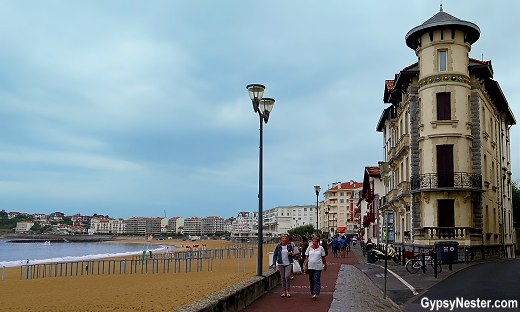
While most of our experience in Basque Country was on the Spanish side, we did get to spend a day across the border in the French portion.
The region has traversed the international border likely longer than there has been a boundary, dating back at least to Roman times. Through all of the trials and tribulations that defined the nations of Europe, the Basque people remained ensconced in this part of the Pyrenees Mountains.
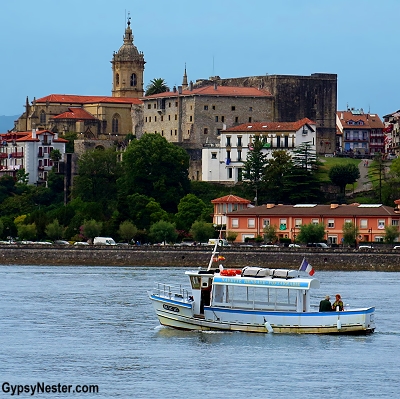
This meant that our journey would take us to a new country officially, but culturally not much would change.
To make the crossing we decided to catch the ferry across the Txingudi Bay from Hondarribia, Spain to Hendaye in France.
This was not for lack of a road, or even a train, it was just because it was a fine way to get a different perspective on both of the towns. It also gave us a feel for the history of these two settlements as ancient fishing villages.
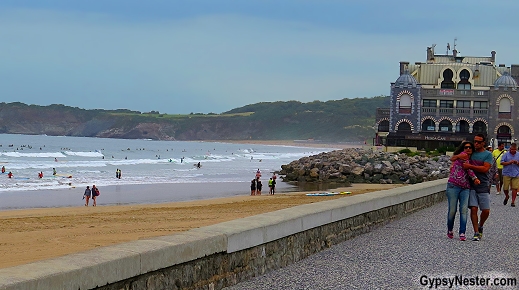
Once we set foot on French territory we walked for a little over a mile along the beach, watching as surfers tried their best to catch a ride on what appeared to be not quite big enough waves.
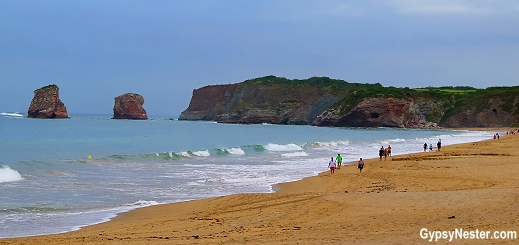
A beautiful waterside promenade lines the shore where surf shops, night clubs, restaurants, and high-rise hotels look out over the Atlantic.
From this esplanade we headed into the woods and were quickly greeted by a big surprise.
As we entered a clearing we were astonished to find a perfect medieval castle that looked to be straight out of the pages in a fairy tale looming across the meadow.
There is a good reason that the Château of Antoine d’Abbadie is in such pristine condition, it is actually quite a bit newer than it appears.
It also lacks any royal roots. The Irish born Antoine d’Abbadie, a notable explorer, geographer, linguist astronomer, and ethnologist built the estate in 1864. As a part of his studies, the château included an extensive library and an observatory.
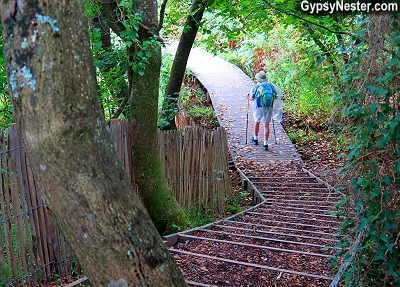
As a part of his heritage, his father was born in the area, he developed a deep interest in the Basque culture and worked for the recognition of the Basque language by publishing grammatical studies.
He went on to establish the Basque Games in the nearby village of Urrugne, and even became mayor of Hendaye from 1871 to 1875.
When Antoine d’Abbadie passed away in 1897, he bequeathed the castle to the Académie des Sciences of the Institut de France with the stipulation that they compile a catalogue of at least a half-a-million stars within fifty years. They obviously succeeded because they remain the owners to this day.
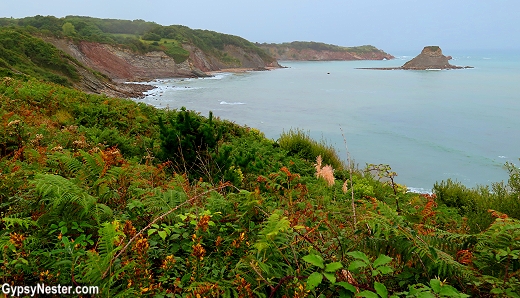
After gawking at the castle for a few minutes we turned back toward the shore and walked another couple of miles along the coastline.
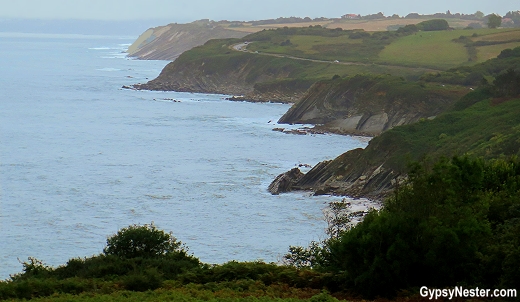
The gathering storm clouds didn’t stop us from pausing for some amazing views of the rocky seashore along the way, but it did get us to pick up our pace on the path to Saint-Jean-de-Luz.

The quaint little seaside resort town is très French, mixing with its Basque heritage. In the fifteen hundreds it was home to a fleet of fearsome corsairs credited with capturing over one hundred ships.
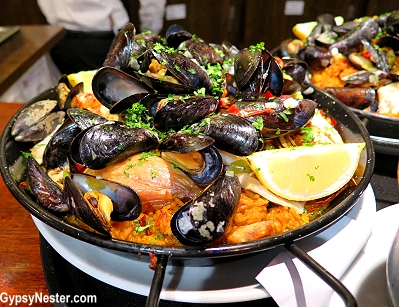
Sometimes considered pirates, the corsairs were more like mercenaries because they were authorized to conduct raids on behalf of the French crown.
Before that, Basque fishermen sailed from the port as far away as Newfoundland in search of cod.
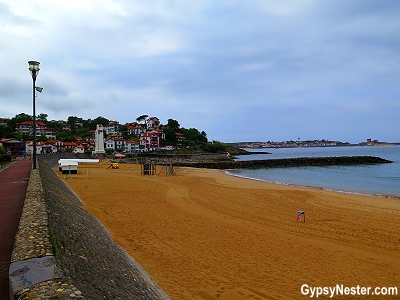 The harbor still dominates the town, but even more impressive are the three huge seawalls protecting the village from the never ending onslaught of the Atlantic Ocean.
The harbor still dominates the town, but even more impressive are the three huge seawalls protecting the village from the never ending onslaught of the Atlantic Ocean.
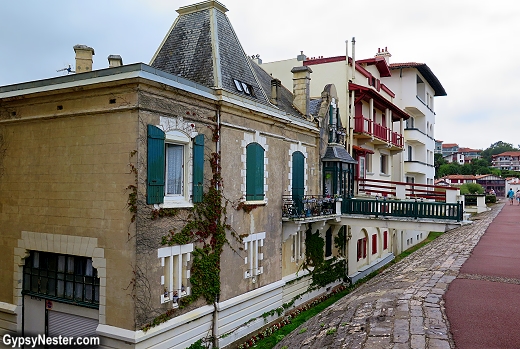
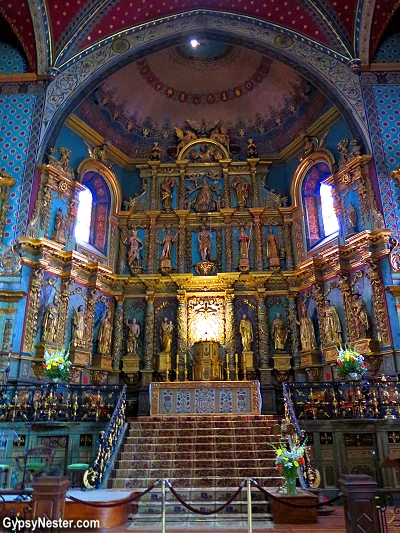
But Saint-Jean-de-Luz’s main claim to fame harkens back to the days when imperial marriages were arraigned in order to form political alliances.
With that goal in mind, a huge wedding took place here in 1660.
French King Louis XIV and the Spanish princess Maria Theresa tied the knot, which sealed the deal on the Treaty of the Pyrenees, and peace reigned across the land… at least for a little while.
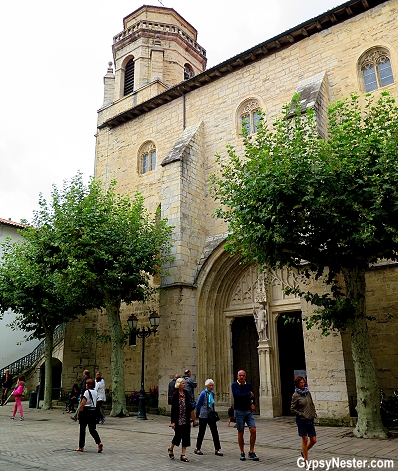 We stopped in at the Church of St. John Baptist, where the nuptials took place, for a peek at history.
We stopped in at the Church of St. John Baptist, where the nuptials took place, for a peek at history.
This is the largest Basque church in France, but has an obvious odd quirk; the main door has been seal off.
No problem, we made our way in through the side entrance.
There are two legends regarding how this came to pass. One is that the door was closed to signify the closing of hostilities between France and Spain. Could be, but perhaps a more likely theory is that Louis XIV ordered the door sealed up so that no other couple could walk into the church to be married in the same manner that he had.
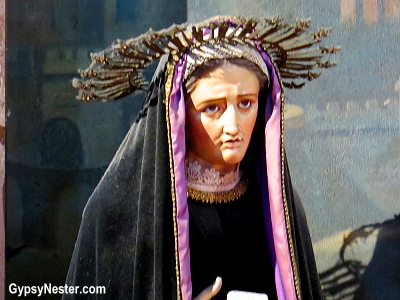 To us it seemed like an odd place for a royal wedding, but then it looks as though the affairs were more of a political nature than those of the heart.
To us it seemed like an odd place for a royal wedding, but then it looks as though the affairs were more of a political nature than those of the heart.
At least, considering the surroundings, they didn’t have far to travel for the honeymoon.
David & Veronica, GypsyNester.com
See all of our adventures in France!
A big thank you to VBT Bicycling and Walking Vacations for providing this ritzy adventure in Saint-Jean-de-Luz! As always, all opinions are our own. See our full adventure from the beginning here.



Excellent post. I used to be checking continuously this blog and I am inspired! Extremely helpful info specially the remaining phase 🙂 I handle such information much. I used to be seeking this certain information for a very lengthy time. Thanks and good luck.